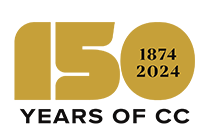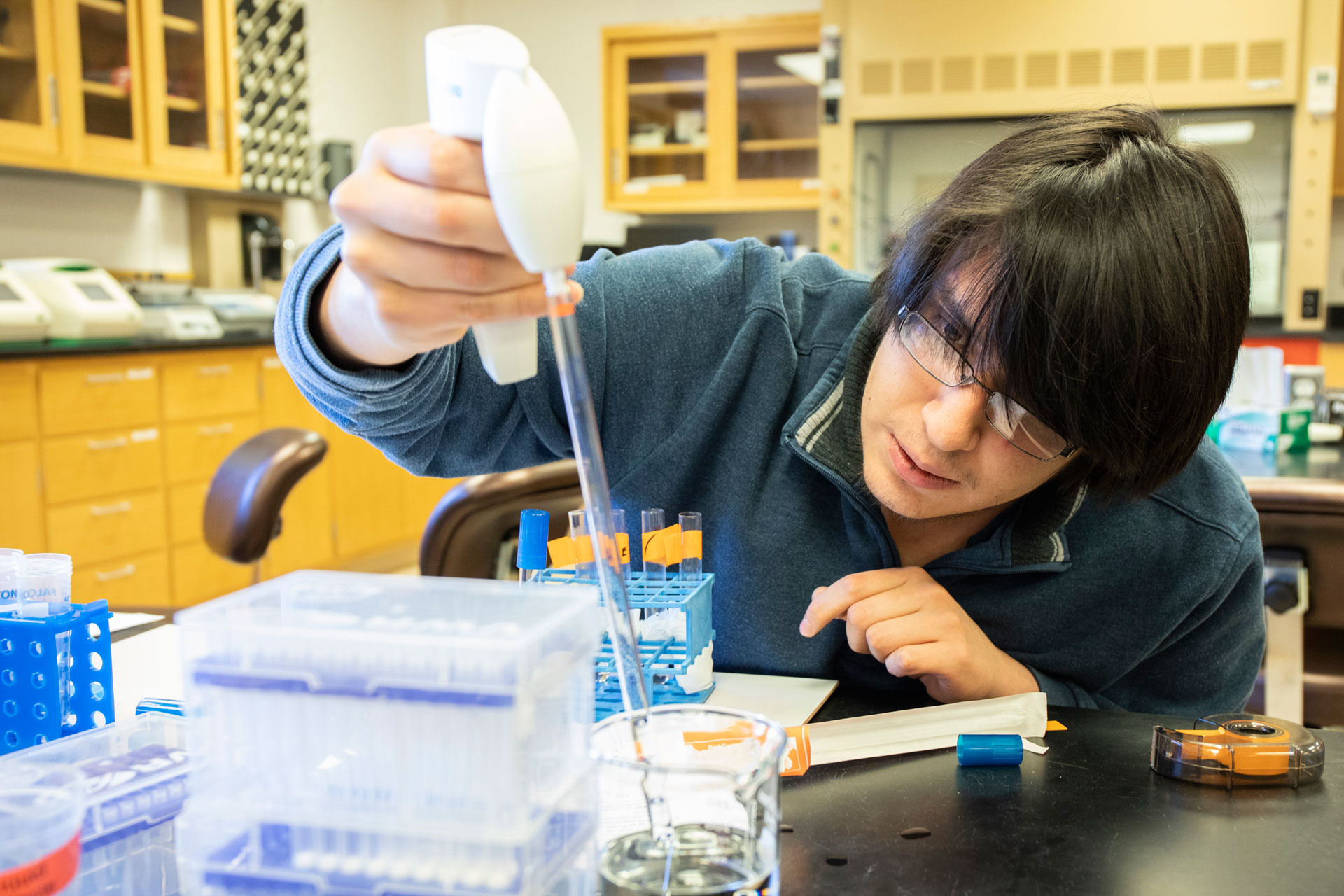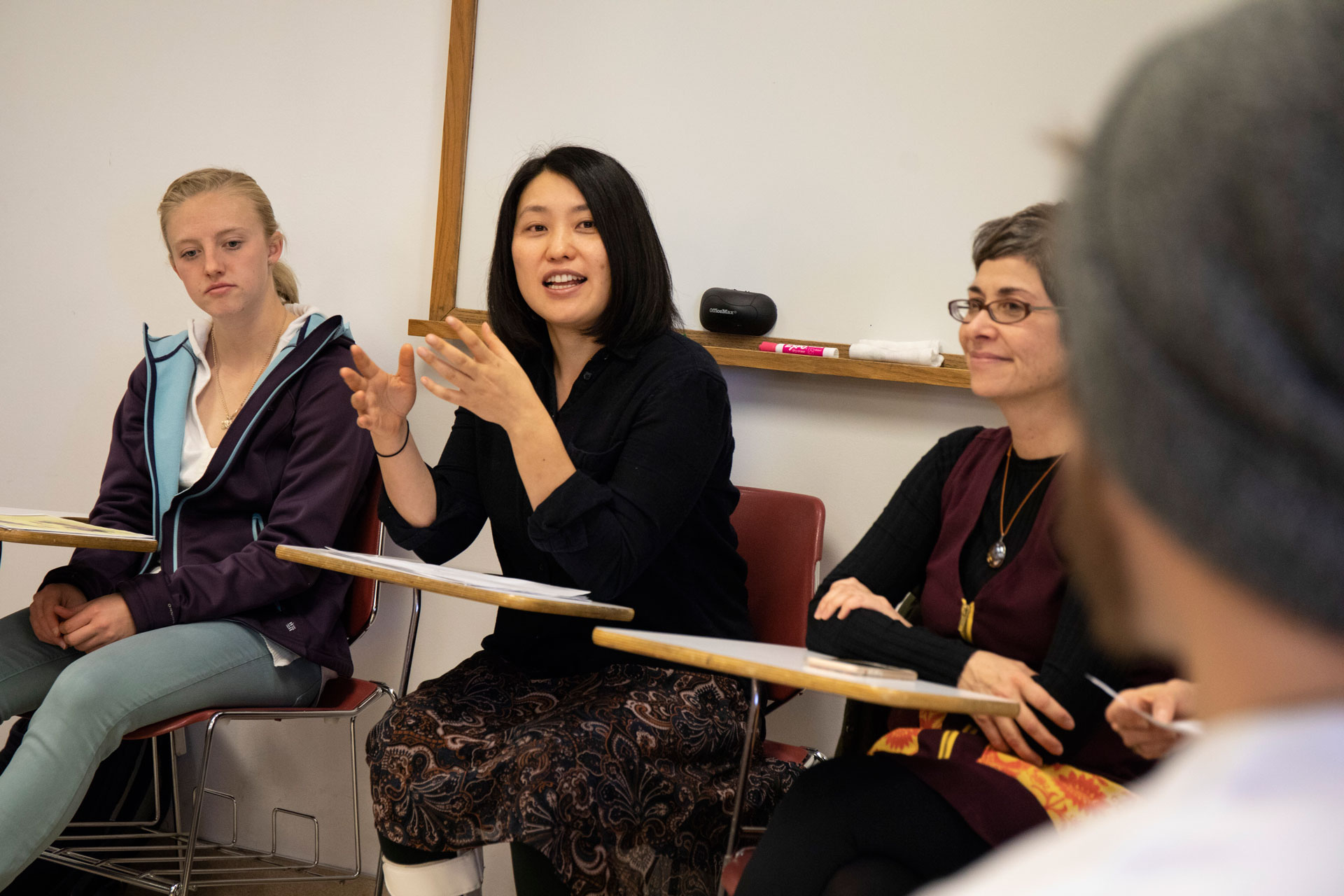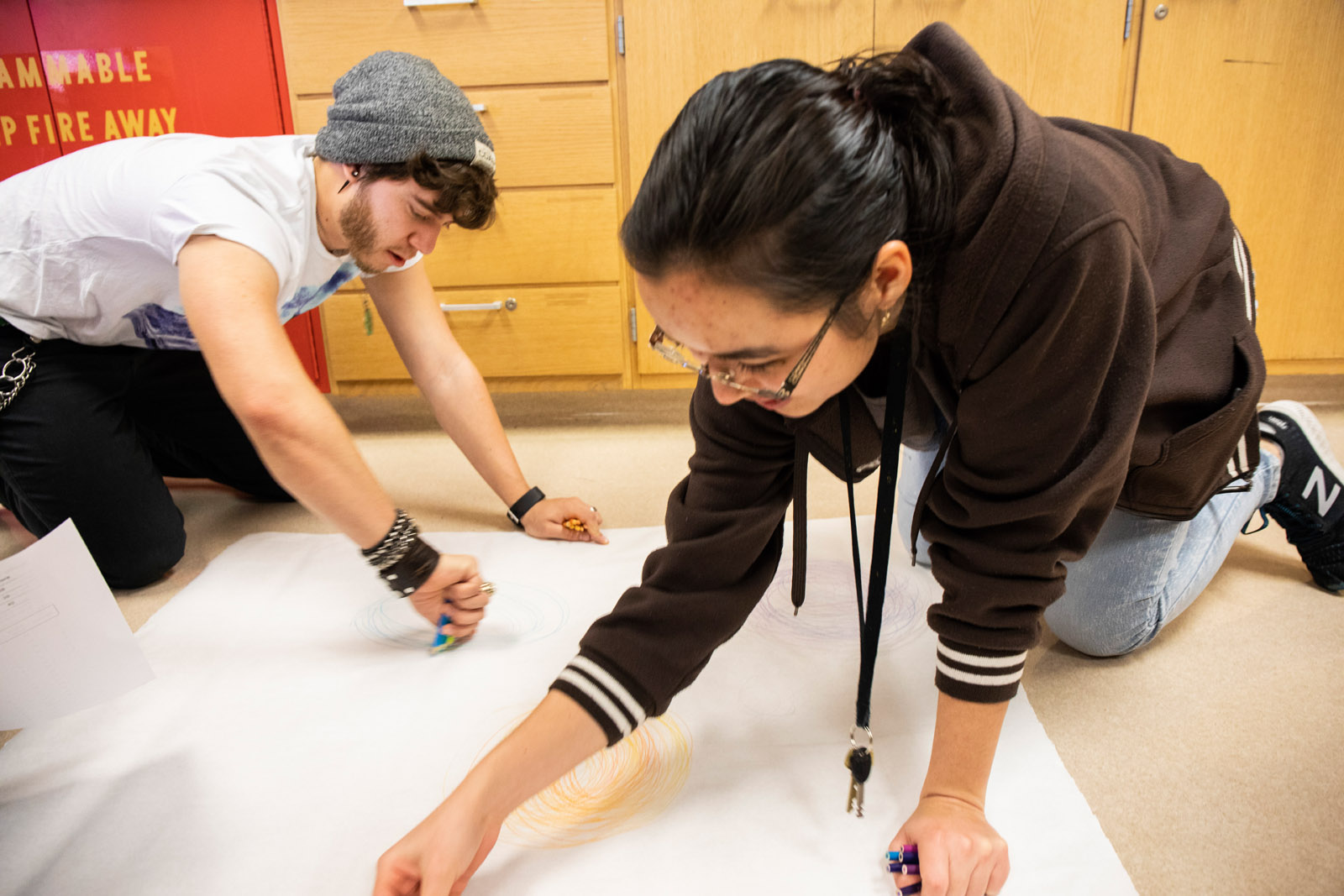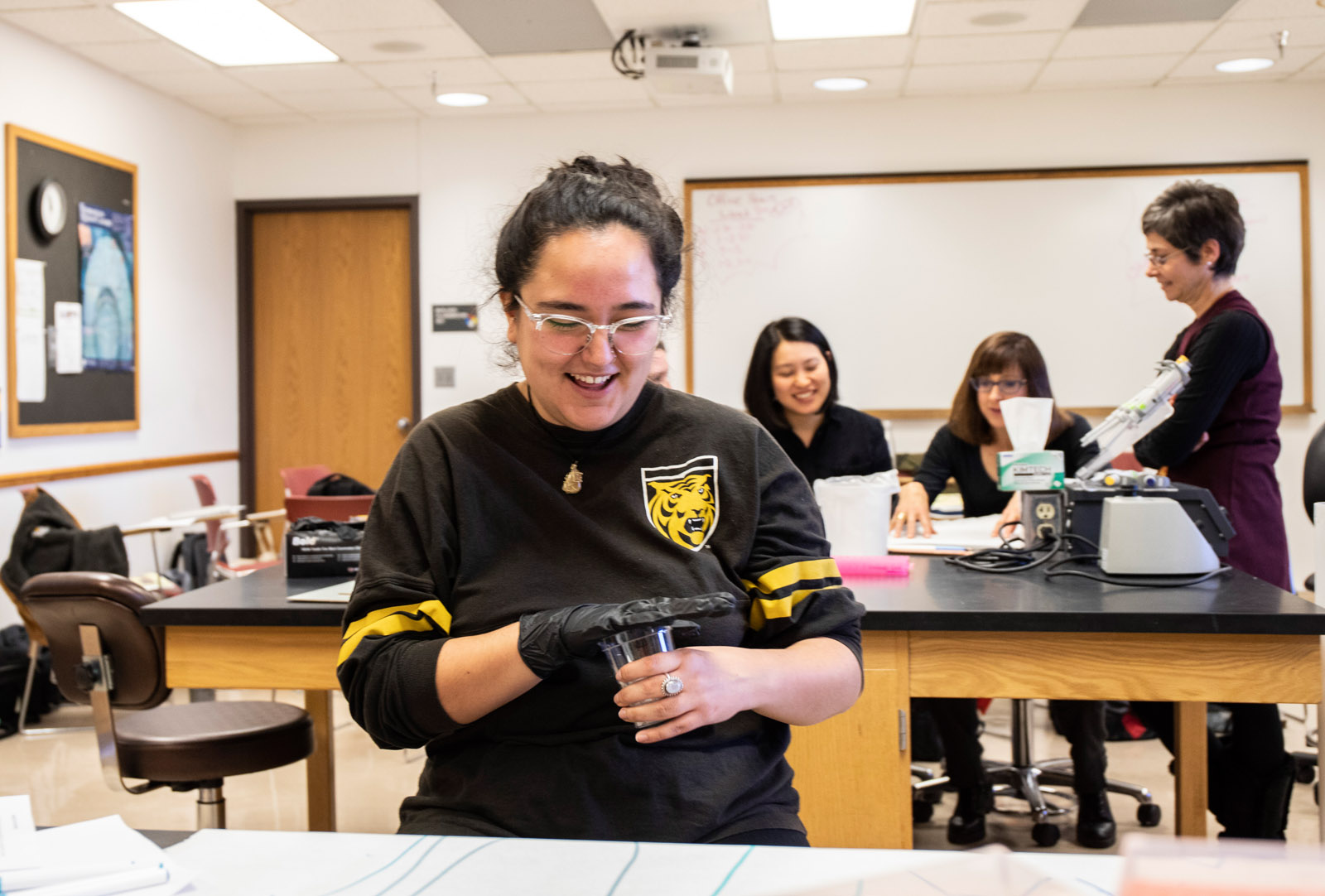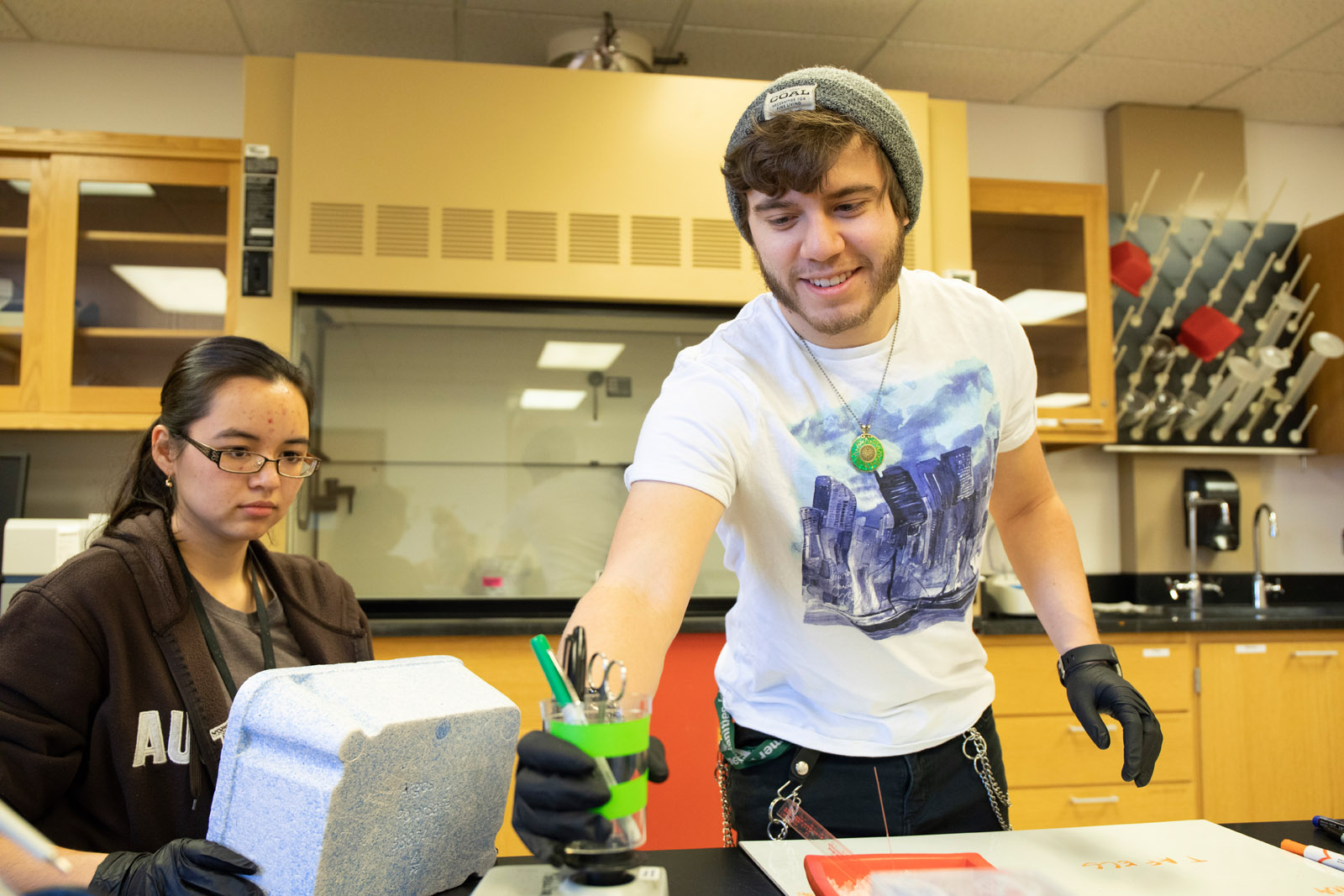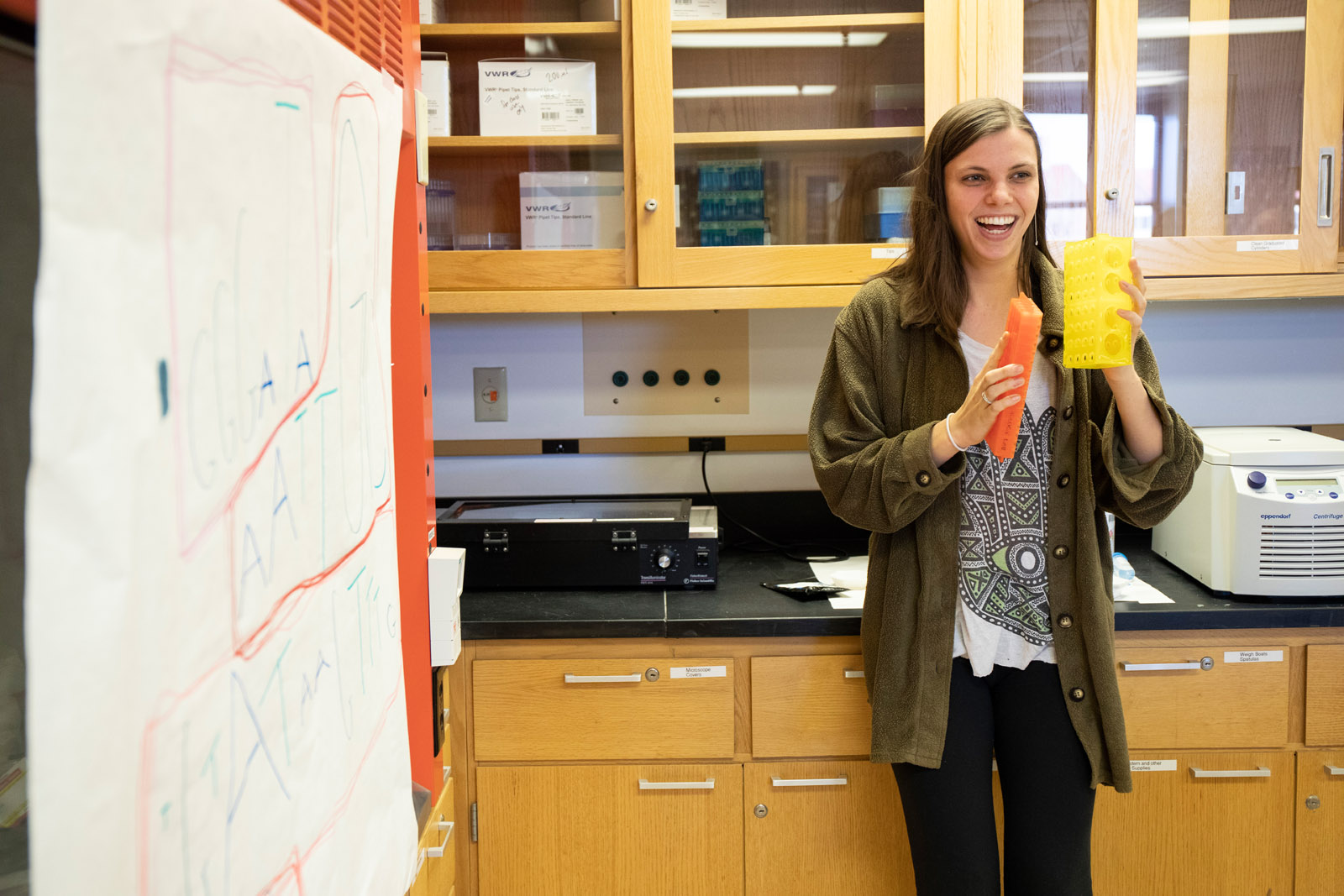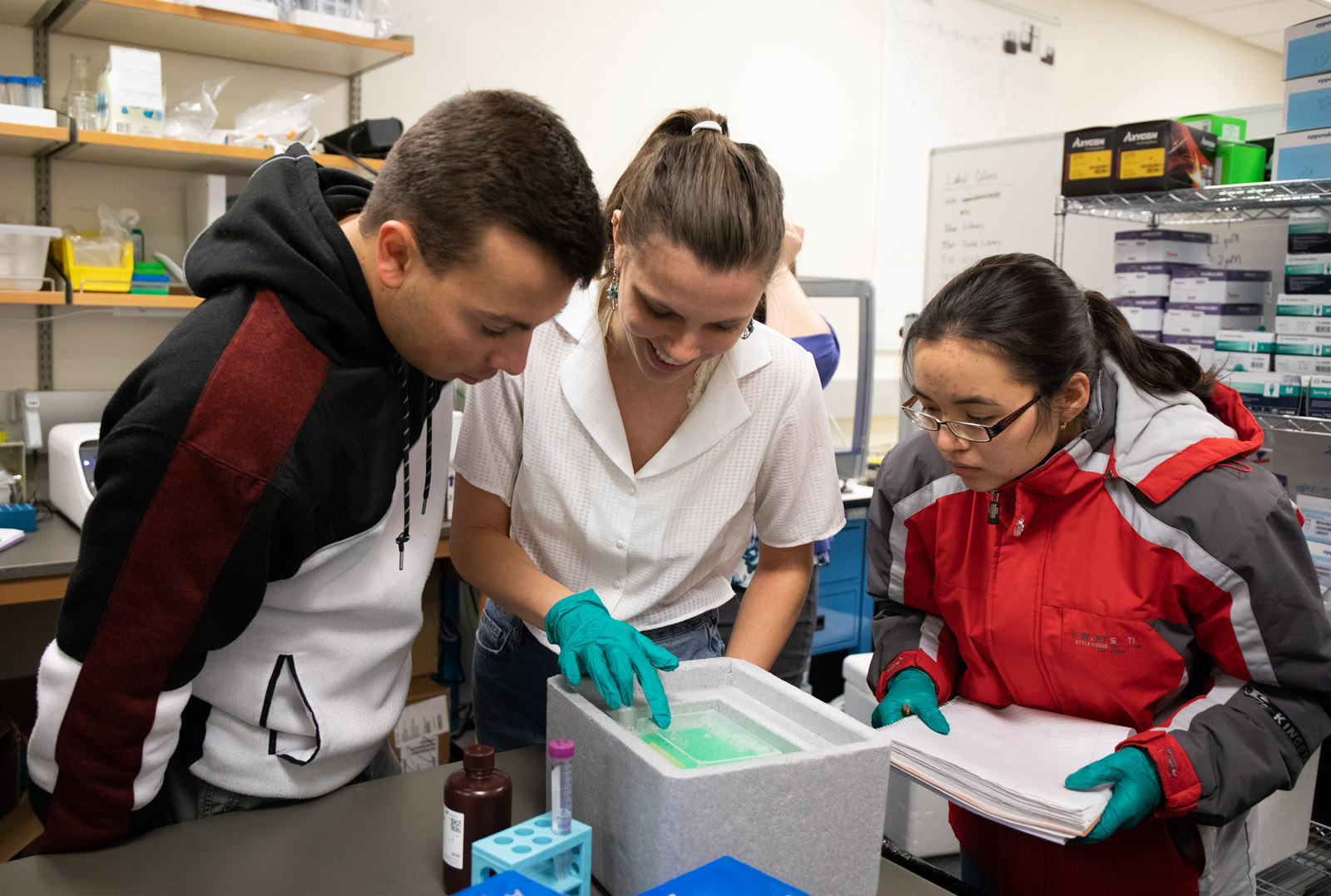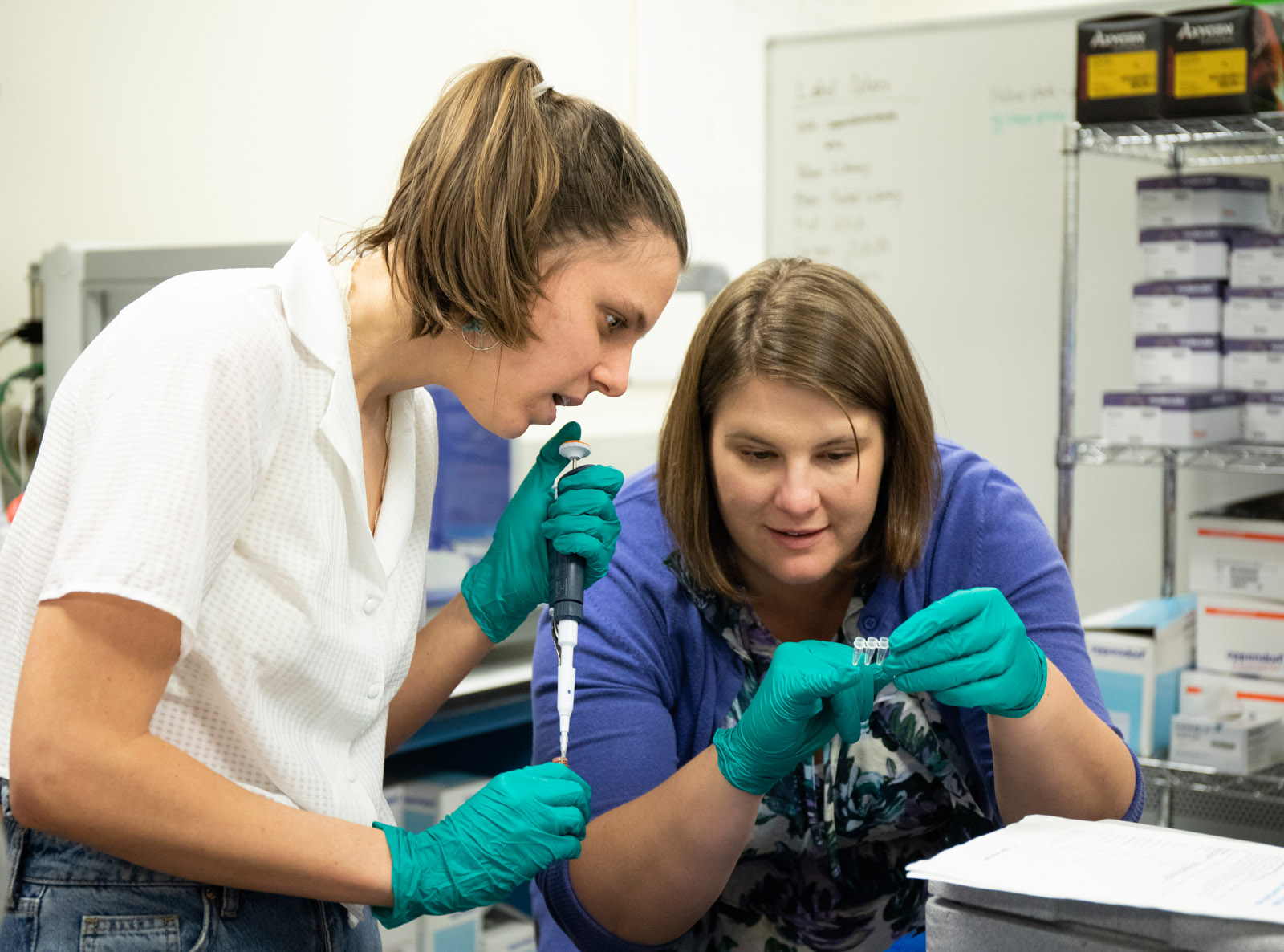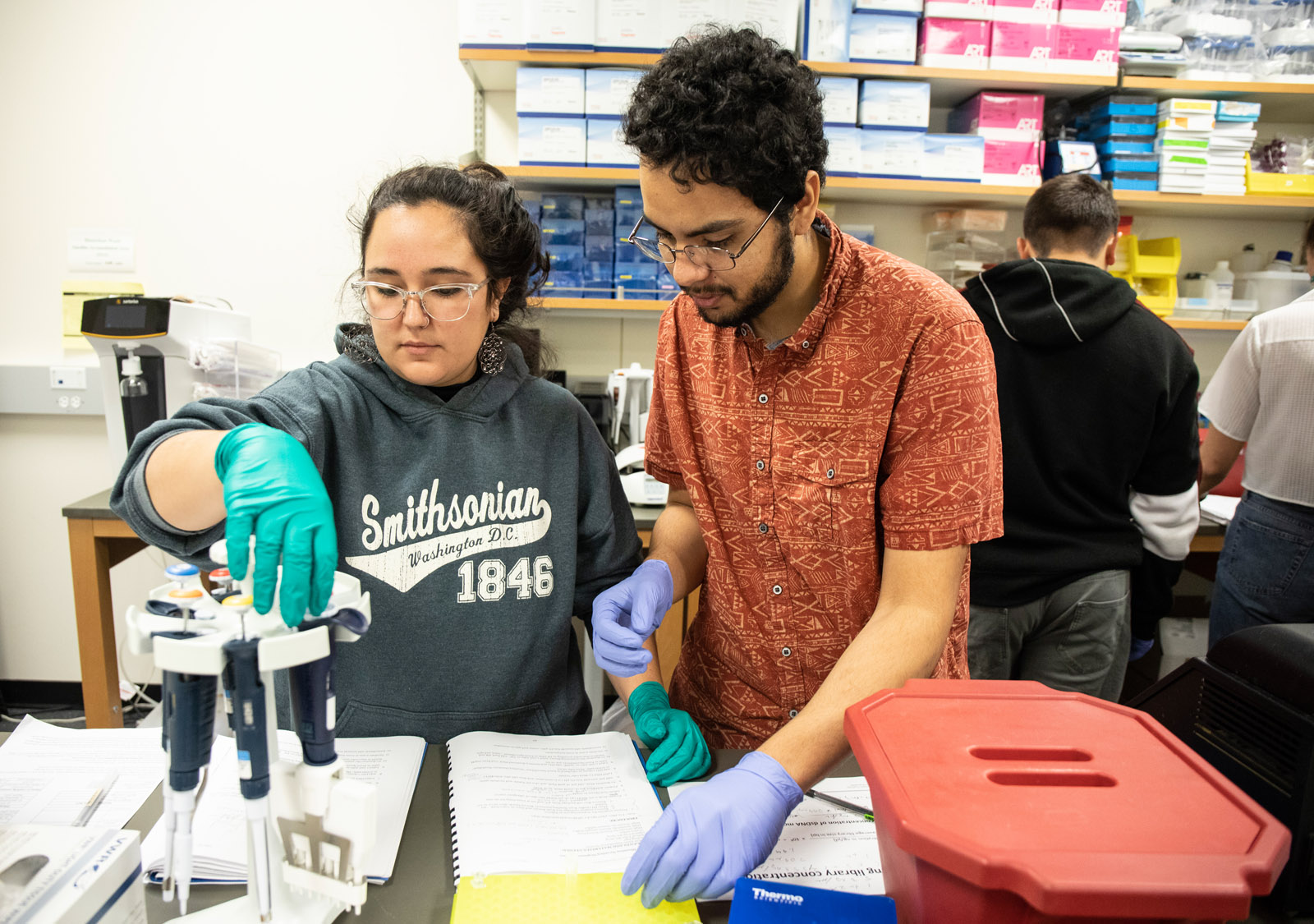Creativity, fun, play, artistic expression. These are not descriptors you usually hear ascribed to an upper-level molecular biology class. But Sara Hanson's class MB350 Laboratory in Genomics is a bit different.
The Block 4-5 course, taken primarily by upper-level students majoring in molecular biology as well as some biochemistry and organismal biology and ecology majors, introduces students to laboratory methods in advanced molecular biology and genomics.
This is a rigorous science course. But it's also a course that teaches and values artistic expression and creativity. In the interdisciplinary convergence class, students use RNA sequencing data they obtained to create a graphical score, assign sounds to it using materials available in the lab, and then perform their pieces for the class.
Hanson is assistant professor of molecular biology at Colorado College. She taught the class with the help of Jessica Hunter-Larsen, associate director of Innovation at CC; Jane Rigler, flutist, composer, improviser, and assistant professor in the College of Letters, Arts, and Sciences, University of Colorado at Colorado Springs; and Reiko Yamada, composer and sound artist.
The students in the class studied gene expression at a genome-scale. The genes in a genome are pieces of information that determine physical traits in an organism. They are expressed first as RNA from the DNA before the RNA is translated into protein, which gives rise to the physical characteristics of an individual.
"In my class, the students isolate RNA from yeast cells under different conditions and sequence all of the RNA they extract. This results in millions of very short sequences, which the students then needed to analyze. The students map them to the genome of the yeast, and then count how many sequences map to each gene in the genome and compare these numbers between samples to see which genes have changed their expression due to the conditions of the experiment, and which have not," says Hanson.
Hanson got to know Jessica Hunter-Larsen when she participated in the Visual Cultures Learning Community in the Spring Semester of 2018. Hunter-Larsen led this series of workshops which focused on developing learning goals and lesson plans based on developing visual learning skills in students. In her position as the associate director of innovation, Hunter-Larsen let Hanson know about sound artist Reiko Yamada's visit to campus in Block 4.
"Since Reiko uses scientific data to create sound and multimedia art pieces, we were inspired to have my students work with the data they created in Block 4 in this way," Hanson says. "Professor Jane Rigler from UCCS came to lead the class in the activity, getting the students thinking about different ways that musical scores can use graphics to depict sound. She and Reiko then tasked the students to use their sequencing data to create a graphical score, assign sounds to it using materials available in the lab, and then perform their pieces for the class."
"I was very excited about bringing this opportunity to the students in my class. It provided the opportunity for them to think about and engage with their data in a completely new way. They got to be creative and have some fun with the data that they had worked so hard to generate and analyze during the block," she says.
Even though this activity was outside of many of the students' comfort zones, they dove right in, says Hanson.
"Once they knew what they were tasked to do, they went right for it. Many of them expressed to me afterwards that they enjoyed the experience, and that it provided a much-needed break from their data analysis. We discussed as a class the value of play in helping foster creativity and developing new ways of thinking. I was blown away by the variety of ways the students approached the assignment and interpreted their sequences as sounds."


